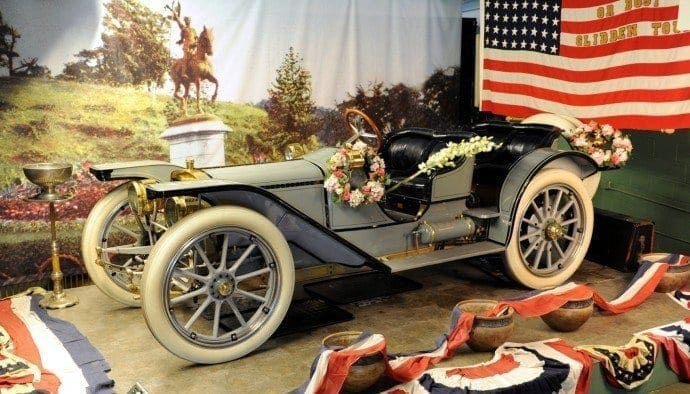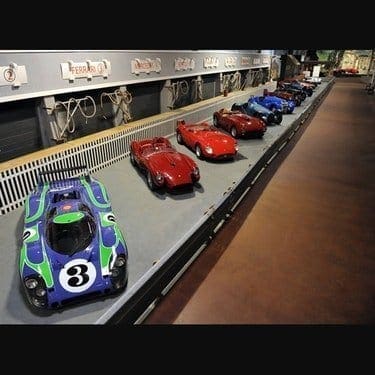The Simeone Foundation Automotive Museum, chosen “Museum of the Year” on two occasions by the International Historic Motoring Awards in London, houses one of the...
Permanent Exhibits
The test of a car’s ability to travel long distances at (for the time) high speeds played a significant role in early automotive marketing. Most...
There was active organized racing throughout the U.S. prior to WWI. Venues such as Santa Monica, CA, Savannah, GA, Elgin, IL, and the Vanderbilt Cup...
Despite an active program before WWI, there was virtually no organized sports car racing in the U.S. until several years after the Second World War....
The first serious attempt to revive sports car racing in the U.S. after WWII was at Watkins Glen, NY in 1948. Here the cars lined...
In Utah, the remains of a prehistoric lake left a flat surface that is perfect for high speeds. This competition is not side-by-side, but against...
Racing on public roads was common in Europe, but discouraged in England. In fact a speed limit of 20mph was in force in the country...
Commonly we use the measurement “0-60” to show the time duration to reach that velocity from a standing start. Timed trials were popular in England...
Popular in England, hill climbs were the test of a car’s pulling ability and its speed and power. A driver with one or more passengers...
The Nürburgring opened in 1927, the same year that Mercedes and Benz joined brands. They, along with many others would find fame on the legendary...
In 1906, Vincenzo Florio devised a race through the hills of Sicily. Sports Car racing had become popular in Italy and the Targa Florio was...
The Mille Miglia (“Thousand Miles”) started in 1927 and was one of the most popular races in Europe. The cars left from Brescia on the...
At a distance of over one thousand miles, the Mille Miglia was a difficult race to finish, much less win. Cars would run out of...
A match race is a dual between two competitors for monetary gain or bragging rights. Such competition is seen in drag racing, or the more...
For the first half of the 20th century, America rarely sent cars to compete in races overseas, despite the extensive worldwide attention these competitions received....
Here we honor the few American cars that seriously competed at Le Mans. Stutz, duPont, and later the Cunningham made strong efforts to win but...
Each of the five cars here, from the major competing countries, was the actual winner in the races shown in the wreaths. Each car represents...
Sporty cars are those built for enjoyment on public roads. In this exhibit, we show the evolution and development of the sporty car from 1912...
Information about this exhibit will be added soon. Exhibition Cars...























